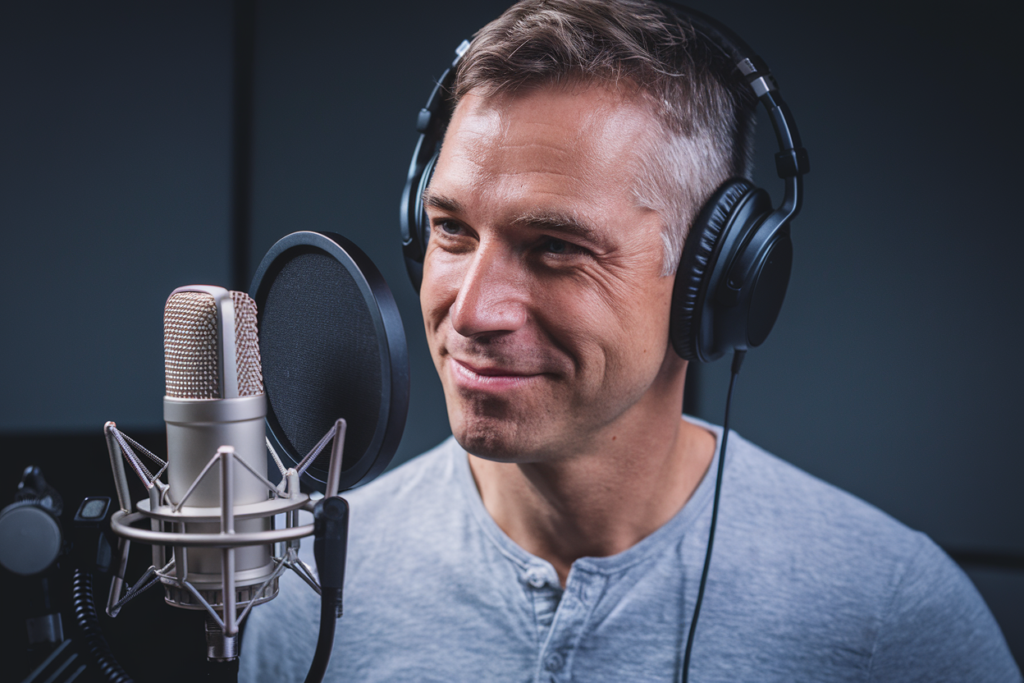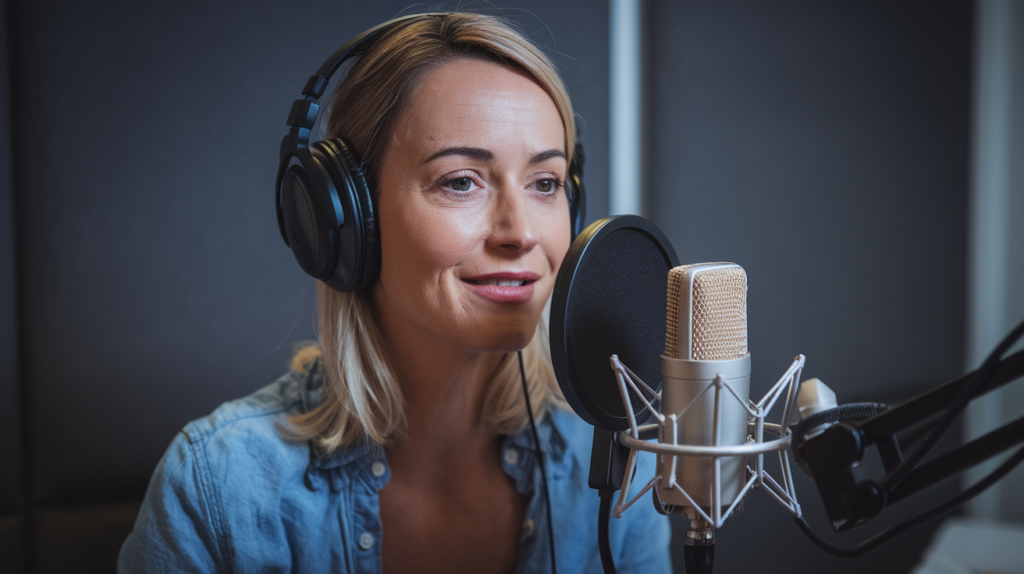Key Takeaways
- Understanding Dubbing: British English dubbing requires a nuanced approach, focusing on cultural and linguistic authenticity through skilled voice actors familiar with regional accents.
- Essential Equipment: High-quality audio equipment, including professional microphones and soundproofing materials, is crucial for achieving clear and engaging voiceovers.
- Step-by-Step Process: The dubbing process involves preparation, recording, synchronization of audio with video, and thorough finalization to ensure a polished end product.
- Collaboration is Key: Effective communication with directors or producers throughout the dubbing process enhances performance quality and ensures alignment with creative vision.
- Invest in Quality Tools: Utilizing reliable Digital Audio Workstations (DAWs) and audio editing software greatly improves the efficiency of the dubbing process and the overall audio quality.
- Focus on Voice Acting Techniques: Selecting the right voice actor and providing clear direction during recordings are vital for delivering natural-sounding dialogue that resonates with audiences.
Ever wondered how to make your videos resonate with a British audience? Mastering British English dubbing can be the key to unlocking new viewers and enhancing your content’s appeal. Whether you’re a seasoned creator or just starting out, knowing the right steps can make all the difference.
Understanding British English Dubbing
British English dubbing involves transforming audio content to align with British cultural and linguistic nuances. This process requires skilled voice actors who can deliver authentic performances that resonate with a UK audience.
When selecting a voice talent for your project, consider their familiarity with regional accents and colloquialisms. The right voiceover artist brings not only vocal skills but also an understanding of context, ensuring that the dialogue feels natural and engaging.
Voiceovers in British English often emphasize clarity and expressiveness. A good voice actor knows how to convey emotion effectively while maintaining authenticity. They adapt their tone, pace, and inflection to match the original content’s intent, which enhances viewer connection.
To achieve successful dubbing, collaboration is essential. You might work closely with directors or producers to communicate vision and expectations clearly. Feedback plays a crucial role during this process—voice talents appreciate constructive input as it helps refine their performance.
Mastering British English dubbing requires attention to detail and an appreciation for cultural subtleties. Choosing the right voice over talent ensures your content resonates well with audiences across the UK, making your project stand out in a competitive landscape.
Essential Tools for Dubbing
Dubbing requires specific tools to ensure high-quality audio that resonates with audiences. Having the right equipment and software makes a significant difference in your final product.
Equipment Needed
- Microphone: Invest in a professional-grade microphone to capture clear, crisp voiceovers. Condenser microphones often provide superior sound quality for voice actors.
- Audio Interface: An audio interface connects your microphone to your computer, converting analog signals into digital data. Look for one with low latency and high-quality preamps.
- Headphones: Use closed-back headphones to monitor recordings without bleed-through noise. This helps you focus on the nuances of each performance.
- Pop Filter: A pop filter reduces plosive sounds from ‘p’ and ‘b’ consonants, ensuring smoother recordings that sound professional.
- Soundproofing Materials: Create an ideal recording environment by using soundproofing foam or blankets to minimize background noise and echoes.
Software Options
- Digital Audio Workstation (DAW): A reliable DAW is essential for editing voiceovers effectively. Look for user-friendly options like Audacity or Adobe Audition that cater to various skill levels.
- Audio Editing Software: Utilize software designed specifically for audio manipulation, enabling you to cut, trim, and fine-tune your recordings seamlessly.
- Plugins: Enhance your audio quality with plugins that offer effects like compression, equalization, and reverb—tools vital for achieving polished results in dubbing projects.
- Voiceover Recording Apps: Consider mobile applications if you’re on the go or need quick edits; many apps provide robust features suited for voice talents who travel frequently.
- Collaboration Tools: Use cloud-based services that allow real-time collaboration with directors or producers during the dubbing process, streamlining feedback and revisions efficiently.
Equipping yourself with these tools ensures you can produce compelling British English dubbing that appeals directly to your target audience while maintaining high production standards.
Step-by-Step Guide to Dubbing
Dubbing requires careful attention to detail and a structured approach. Follow these steps to ensure a successful British English dubbing process.
Preparing the Video
Start with the video content ready for dubbing. Analyze the script thoroughly, noting key dialogue, emotional cues, and pacing. Consider how cultural nuances may affect delivery. This groundwork helps identify suitable voiceover talent for your project. Ensure that video files are in a compatible format for editing software.
Recording the Audio
Next, select experienced voice actors who can convey authentic British accents and emotions. Create a comfortable recording environment with high-quality equipment like professional microphones and soundproofing materials. During recording sessions, provide clear direction to the voice artists about tone, pace, and emotion needed for each segment. Multiple takes may be necessary to capture the best performance.
Synchronizing Audio with Video
Once you have recorded audio tracks, it’s time to synchronize them with the video seamlessly. Use reliable Digital Audio Workstations (DAWs) or editing software designed for this purpose. Align audio cues precisely with visual elements while ensuring lip-sync accuracy where applicable. Adjust timing as needed to maintain natural flow between speech and action on-screen.
Finalizing the Dub
After synchronization is complete, review everything carefully. Pay attention to transitions between scenes and overall sound quality—make adjustments where necessary. Add background music or sound effects if they enhance engagement without overpowering voiceovers. Finally, export your project in high-quality formats appropriate for distribution channels.
By following these steps meticulously, you’ll create an engaging dubbed video that resonates well with British audiences while showcasing top-notch voiceover talent throughout your content.
Tips for Successful Dubbing
Successful dubbing requires a blend of technique, talent, and technology. With the right approach, you can create captivating content that resonates with your British audience.
Voice Acting Tips
Selecting the right voice actor is crucial. Look for a voice artist who understands British nuances and accents. This familiarity fosters authenticity in performance. When directing your voice talent, provide clear guidance on emotional delivery and tone to match the original content’s intent. Encourage them to express the dialogue naturally while maintaining clarity; this balance enhances engagement with viewers. Practice sessions before recording can help fine-tune performances and ensure alignment with your vision.
Enhancing Audio Quality
High-quality audio significantly impacts the final product’s overall appeal. Invest in professional-grade equipment like a condenser microphone for clear sound capture and an audio interface for seamless connectivity. Use closed-back headphones to monitor recordings without background noise interference effectively.
During post-production, employ Digital Audio Workstations (DAWs) for editing tasks like syncing audio with video seamlessly. Utilize noise reduction techniques to eliminate unwanted sounds while preserving vocal integrity. Remember, clean audio leads to a polished final product that captivates viewers and keeps them engaged throughout your video content.
Conclusion
Mastering British English dubbing is a game changer for your video content. By implementing the right techniques and using quality equipment, you can ensure your videos resonate with British audiences. Pay attention to detail during each step of the process from selecting voice talent to final edits.
Collaboration and feedback are key to refining performances that connect emotionally with viewers. With dedication and the right tools at your disposal, you’ll create captivating dubbed videos that not only engage but also expand your reach in a competitive market. Embrace these strategies and watch your content thrive in new territories.
Frequently Asked Questions
What is British English dubbing?
British English dubbing is the process of replacing original audio content with a voiceover that aligns with British cultural and linguistic nuances. This enhances video appeal for British audiences.
Why is mastering British English dubbing important?
Mastering British English dubbing helps creators connect effectively with British viewers, making their content more relatable and engaging. It can significantly expand their audience reach.
What are essential tools for effective dubbing?
Key tools include a professional-grade microphone, audio interface, closed-back headphones, pop filter, soundproofing materials, and reliable Digital Audio Workstation (DAW) software for editing.
How do I select the right voice talent for dubbing?
Choose voice actors familiar with regional accents and colloquialisms. Their ability to convey emotion clearly while maintaining clarity is crucial for authentic performances.
What steps should I follow in the dubbing process?
Start by analyzing the script to identify key dialogue. Record the audio while providing clear direction to voice actors. Finally, sync the audio with video using DAWs and review for quality.
How can I improve sound quality in dubbed videos?
Use high-quality recording equipment and apply post-production techniques like noise reduction and seamless syncing between audio and video to enhance overall sound quality.
What tips can help me succeed in British English dubbing?
Focus on selecting skilled voice actors who understand cultural nuances, provide clear direction during recording sessions, ensure high-quality audio equipment usage, and maintain attention to detail throughout the process.







